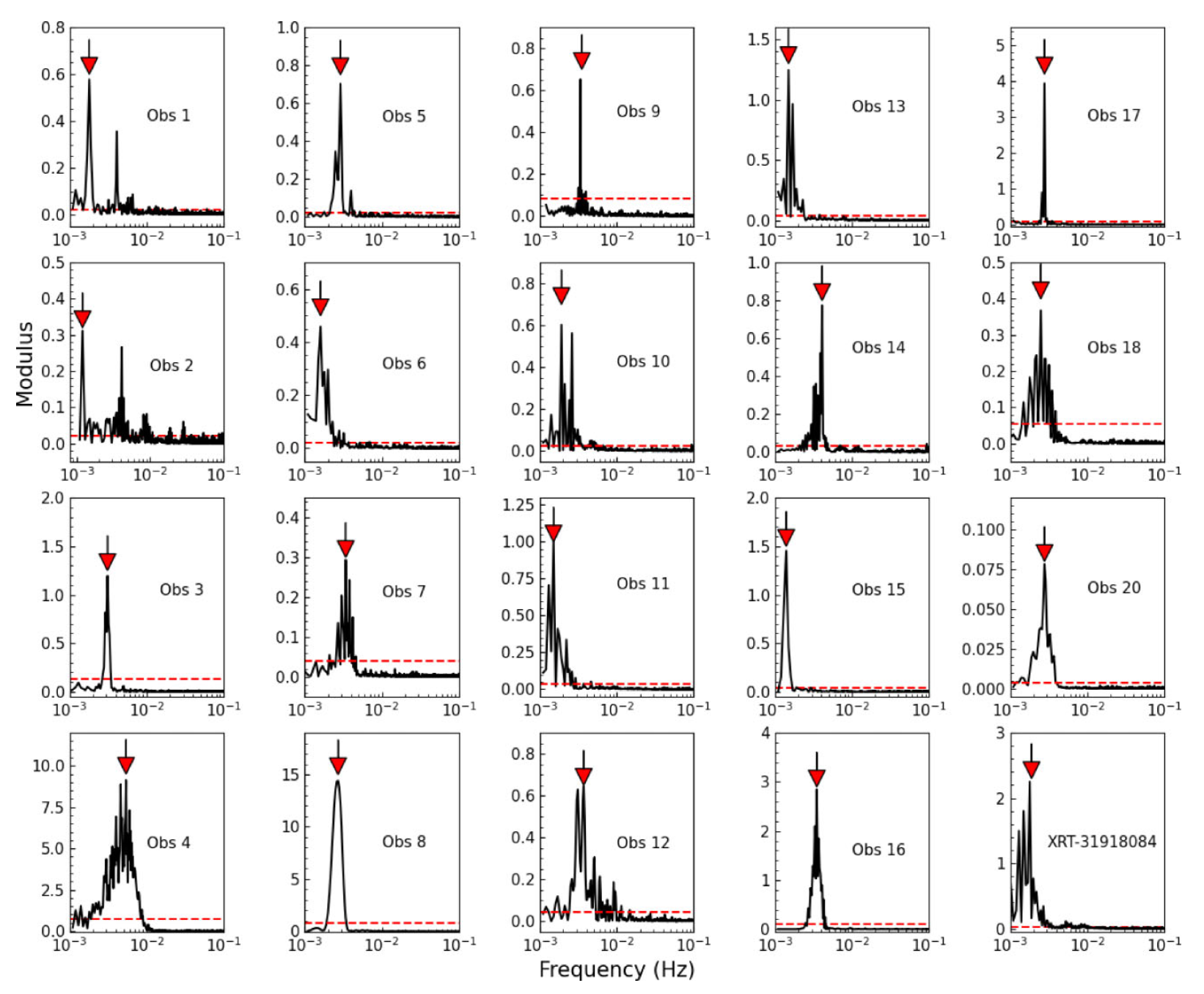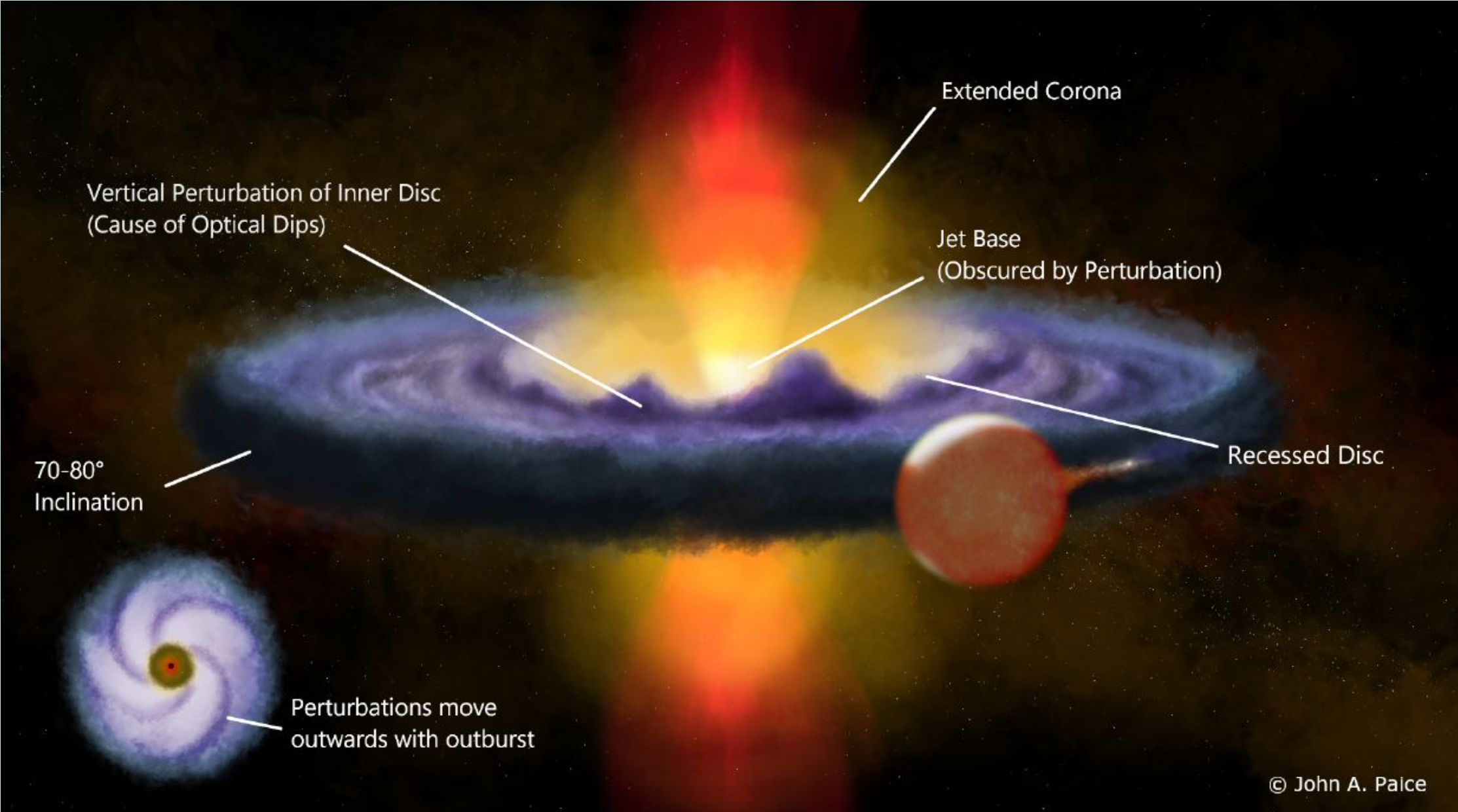NICER / ISS Science Nugget
for July 6, 2023
Unusual Oscillations in a Black Hole Binary System
Although they share many common traits, binary systems in which a black hole accretes matter from a companion star demonstrate sometimes bewildering variety in their observed behaviors. One such system, Swift J1357.2-0933, reveals itself in outburst every few years, but stands out among its peers because it offers up phenomena that seem to change even from one outburst to the next. For example, NICER's predecessor X-ray timing mission (the Rossi X-ray Timing Explorer, RXTE) saw slow fluctuations in Swift J1357's X-ray brightness in just one observation at the start of the 2011 outburst. This quasi-periodic oscillation (QPO) was measured to have a characteristic frequency of 6 millihertz (6 mHz) -- about one oscillation every few hundred seconds -- but subsequent observations, including through the outburst's decline, showed no similar signal. In 2019, Swift J1357 was again active; at that time, NICER was able to carry out multiple observations during the decaying phase of that outburst, and detected mHz QPOs in nearly every one of them.
Historically, mHz oscillations in the brightness of Swift J1357 have also been seen at visible and ultraviolet wavelengths, primarily in the form of short-lived "dips". The leading hypothesis for this behavior invoked a structure surrounding the black hole, roughly in the shape of a torus viewed nearly edge-on, that would occasionally -- because of irregularities in its vertical extent -- obscure our view of the hot accretion disk primarily responsible for the optical-through-X-ray emission. The optical QPOs were seen, in past outbursts, to decrease in frequency as the outburst evolved, suggesting that the obscuring torus was slowly pulling away from the black hole as the flow of matter from the companion star subsided. Curiously, the X-ray QPOs seen by NICER don't follow this trend at all, calling into question the obscuring-torus interpretation, at least as it may apply to X-ray wavelengths.
These and other results from NICER's 2019 observations of Swift J1357 were recently published in the peer-reviewed journal Monthly Notices of the Royal Astronomical Society by A. Beri (Indian Inst. of Science and Education Research) and collaborators.


Left: The quasi-periodic X-ray brightness oscillations of Swift J1357 during the system's 2019 outburst. Peaks with red arrows represent brightness fluctuations on timescales between 200 and 700 s. Oscillations with varying levels of statistical significance are seen in virtually every NICER observation (numbered panels) and one with the X-ray telescope onboard NASA's Swift observatory. (Credit: Beri et al. 2023)
Right: Artist's depiction of the Swift J1357 binary system, in which matter from a low-mass donor star (foreground) is feeding a torus structure that periodically obscures from our view the accretion disk and other energetic processes closest to the central black hole. (Credit: J. A. Paice and A. Beri)
<< Previous
Main Index
Next >>